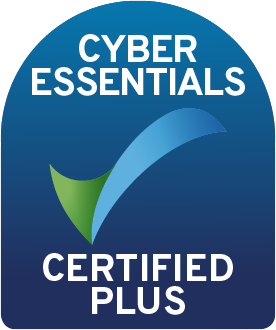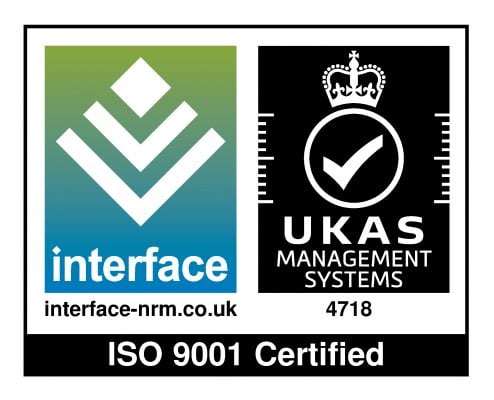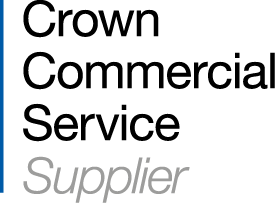TL;DR: A Guide to Microlearning
Bottom Line: Microlearning delivers focused learning through short, bite-sized content (under 10 minutes) that matches how modern learners naturally consume information.
What It Is: Short bursts of content including videos, infographics, audio, quizzes, and brief text that focus on single learning objectives without overwhelming learners.
Best Applications:
- Employee onboarding - Prevents new starter overwhelm with manageable induction chunks
- Upskilling programs - Fits easily into busy workdays without disrupting productivity
- Compliance training - Keeps learners engaged with typically monotonous content through varied formats
- Education - Provides flexible, self-paced learning for students, especially in universities
Key Benefits:
- For learners - Self-paced study, personalised learning structures, easy content repetition
- For administrators - Better ROI through faster/cheaper content production, simplified updates, reduced trainer dependency
- For organisations - Mobile learning capabilities, higher engagement, improved knowledge retention
Implementation Success Factors: Focus on quality content design rather than simply breaking existing materials into smaller pieces. Use blended learning approaches, leverage mobile-friendly LMS platforms, incorporate gamification elements, and ensure your LMS supports various microlearning formats.
Technology Requirements: Modern LMS platforms like Totara Learn with mobile optimisation, progress tracking, and social sharing capabilities for collaborative learning experiences.
To get the most out of microlearning, it's important to keep each module focused on one clear goal, make content easy to access on mobile devices, and include a mix of media and interactive features to keep learners engaged. Tailoring learning paths to individual needs and using feedback and analytics to monitor progress and improve results over time are also key to making microlearning truly effective.
Advances in technology have changed the way we absorb information and consume content. We have the ability to get up to speed with all the latest news stories within the first 5 minutes of our morning routine just by using a smartphone. Long gone are the days when people would rely on sitting down in front of a half-hour news programme to catch up on the latest current affairs. People increasingly want simplified, bite-sized chunks of information readily available and ready to absorb in a matter of minutes.
This shift is echoed in almost every situation where we are looking to assimilate information and it is no different in a learning and development environment. The way most people learn reflects on the way they consume content daily and if you want to get the best out of your staff or students then it’s essential to cater to this style of learning. One way to achieve this is through the use of microlearning.
If the term ‘microlearning’ is new to you or you’re not quite sure how to implement this learning style into your L&D strategy, then don’t worry! We’ve put together a quick guide to get you up to speed.
What is microlearning?
Microlearning usually consists of short bursts of content which typically takes under 15 minutes to consume. It’s highly likely you’ve engaged in some form of microlearning in your lifetime, for example, you may have watched a 5-minute tutorial video on how to install your new washing machine.
Rather than reading a 10-page document, all the necessary steps are provided in a short and concise delivery that can be paused or re-winded. The intention of microlearning is not to overwhelm a learner with masses of information but allow them the breathing space to grasp what they have just been taught and if necessary, re-visit the content to gain a better understanding.
Examples of microlearning content
Although videos are a popular form of content when it comes to microlearning, there is also a wide variety of additional content styles:
- Images
- Infographics
- Audio
- Short form text/copy
- Tests and quizzes
- Knowledge checks
Where can I apply microlearning?
Microlearning is useful in most sectors and industries. It’s important to remember that you don’t need to use the microlearning technique as your only available learning style. Rather, it’s best if you can embed it in amongst other forms of content as you may find there are other longer-form e-learning styles that suit the subject matter better. Some examples of where you may use microlearning can be found in:
- Onboarding - this can be a daunting time for new starters as they are often feeling overwhelmed when joining a new team, a new environment/job role etc. Using an LMS for onboarding is key to ensuring they have a clear induction process and incorporating microlearning into the learning plan is a great way to ensure they don’t feel too overloaded.
- Upskilling – if your staff require upskilling or have enrolled on programmes to elevate their existing skills, then you may have concerns around fitting additional learning into their already busy working day. This is where microlearning is hugely beneficial as these small bursts of information are much easier to fit into a regular workday.
- Compliance training – the subject matter of this form of training can often be fairly monotonous and it can be hard to keep learners engaged. If they are not engaged, then it’s unlikely they’ll be retaining the information. Try using various forms of delivery such as a video; followed by a brief reading chapter and round it up with a fun quiz at the end which not only will keep users engaged but also give you some insight into whether they are paying attention.
- Education – microlearning suits schools but particularly lends itself to universities. As students are more self-directed in university, having these bite-sized chunks of content readily available on your LMS offers them the flexibility to go through the material when it suits them and as many times as they need.
Why should I use microlearning?
The benefits of incorporating microlearning into your learning and development strategy are extensive and in the interest of the learner, teacher, and administrator collectively.
One of the most advantageous perks of microlearning for a learner is that they can study at their own pace. Having the flexibility to create their own learning structure means they can also cater the lesson plan to their style of learning. For example, some may find it useful to re-visit one lesson multiple times consecutively to ensure they fully understand and having short snippets of content allows for this repetition.
An LMS such as Totara Learn features a dynamic goal-focused dashboard which shows the progress of a learner in their current programme. With Totara you can use a percentage display format, this is great for a microlearning strategy as a learner can pop in and out of a programme whilst always keeping up to date on how far along, they are. Whenever they complete another bite-sized lesson, the percentage will increase, making sure they stay on track and encouraging them to continue until they’ve achieved 100%.
When using an LMS, establishing a decent ROI will undoubtedly be at the forefront of the mind of administrators and microlearning can contribute towards achieving this in a number of ways. For example, short forms of content are generally cheaper and faster to produce. This means less money spent on paying a production team or if produced internally, staff can be redistributed to other tasks sooner. Similarly, with the type of content typically used in a microlearning strategy, a teacher/trainer isn’t required to deliver the materials.
In addition, when content needs to be updated, there isn’t a need to sift through pages of long written content or hours of video. Amendments can be carried out quickly and with the use of an LMS, everything can be found through an easy navigation system and edits can be made through the platform as and when needed.
What are the best practices for using microlearning?
Delivering information to your learners in the traditional lecture style often leads to a lower percentage of knowledge retention. Some people tend to switch off and stop engaging with the lesson if there is only one form of delivery. As mentioned earlier, the ‘modern day’ learner is used to short bursts of content requiring a shorter attention span. With social media apps such as TikTok which features a stream of consecutive videos all under 60 seconds or Instagram, an image-based form of social media, the shift towards fast, easily digested material is accelerating. With this in mind, below are some key tips to get the most out of microlearning:
Content Creation
- Focus on one learning objective and resist the urge to cram too much information into one short learning session
- Keep things brief. The ideal length for microlearning is between 2 and 10 minutes. And video content is often more effective at 3-5 minutes.
- Create engaging and interactive content - short videos and animations, infographics, interactive quizzes, scenario-based simulations
- Repurpose existing longer form training materials such as webinars, manuals, and presentations to save time and resources
Implementation and delivery best practices
- Support just-in-time learning and make content easily searchable and accessible
- Design for mobile-first because many learners today access microlearning content on their smartphones
- Create structured learning pathways, particularly for more complex topics. Sequence microlearning modules in a coherent learning journey
- Blend with other training - microlearning is often most effective when used as part of a blended learning programme (for example, as a pre-session warm up or post-session follow-up)
- Encourage social learning where possible. Chat rooms, discussion boards and other forms of peer collaboration boost engagement and improves knowledge retention
Performance and assessment
- Leverage data and analytics inherent in your LMS to track key metrics like completion rates, quiz scores, engagement. This data can be used to refine and improve your content and training modules
- Reinforce microlearning training with immediate feedback. Quizzes and interactive elements should provide instant results and feedback to correct any early misunderstandings of the training

Just as the preferred type of content has changed, so has the delivery. Our mobile phones are now arguably the main tool used for consuming content and once again, aligning your L&D delivery to match this is recommended. A good LMS facilitates mobile learning, meaning learners can take their e-learning to the next level, giving your employees the ability to learn anywhere, whether working in the field or on the go. Microlearning lends itself particularly well to mobile learning as short bits of content can be consumed whenever and wherever suits them.
Microlearning makes a learning programme more ‘palatable’ and keeps learners engaged. Try combining this with a gamification element by including fun games and quizzes. Incorporating short form, game-style content such as matching up the word to the definition encourages a sense of achievement and helps the user understand whether they need to re-visit the lesson. Squeezing these games in between other forms of content also establishes a sense of variety and keeps learners stimulated.
If you’re looking to include a social element within your LMS, such as Microsoft Teams integrations or a social platform within your LMS such as Totara Engage, using short-form content in your learning programme means it can easily be shared amongst employees or students via your LMS. As a result, users learn collaboratively and can pass on the content they enjoyed or struggled with similar to the way they might share a fun video they’ve seen on social media.
Achieving a successful microlearning strategy
When transitioning to the use of short form content, don’t simply take elements of your current content and break it up into smaller divisions. These short chunks of information need to include quality content in order to have a greater impact. Additionally, make sure the type of content you’re transitioning will suit this shorter delivery as it’s likely there will be some information that needs to be delivered in a lengthier format.
Take advantage of the available features and formats that your LMS can facilitate in order to deliver a variety of microlearning content. If you’re unsure what’s available, then take stock and plan out the type of subject matter suited to each accessible content type. If your LMS doesn’t facilitate the type of microlearning delivery that has been mentioned in this article, then it may be time to look at a new LMS.
Chat with the Hubken team
If you’re looking for a new LMS that can underpin your desired microlearning strategy then chat with one of our experts today. As a Totara Platinum Alliance Partner and Moodle expert, we design and deliver high quality e-learning solutions for leading UK businesses and organisations, building lasting relationships so that they can realise the full potential of their learning and development projects.
Talk to us today and we’ll help you realise your e-learning goals and deliver measurable business results.
Frequently Asked Questions about Microlearning
What is microlearning and how does it work?
Microlearning consists of short bursts of content that typically take under 10 minutes to consume and is designed to deliver focused learning without overwhelming learners with masses of information.
This approach allows learners breathing space to grasp what they've been taught and revisit content for better understanding.
Common microlearning formats include videos, infographics, audio clips, short-form text, tests and quizzes, and knowledge checks.
Critically, this method mirrors how modern learners consume content daily as it is similar to watching a 5-minute tutorial video instead of reading a 10-page document.
This bite-sized approach caters to shorter attention spans and the way people naturally absorb information in today's digital environment.
Where can microlearning be applied most effectively?
Microlearning is valuable across most sectors and industries and works particularly well in four key areas.
For employee onboarding, it prevents new starters from feeling overwhelmed by breaking induction processes into manageable chunks.
In upskilling programsmes, short learning bursts fit easily into busy workdays without disrupting productivity.
Compliance training benefits significantly as microlearning keeps learners engaged with monotonous subject matter through varied delivery methods like videos, brief reading chapters, and interactive quizzes.
In education, particularly universities, microlearning suits self-directed students by providing flexible, bite-sized content accessible on LMS platforms whenever needed, allowing multiple revisits for better comprehension.
What are the main benefits of implementing a microlearning strategy?
Microlearning offers extensive benefits for learners, teachers, and administrators.
For learners, the flexibility to study at their own pace and create personalised learning structures caters to different learning styles, with short content allowing for easy repetition and reinforcement.
For administrators, microlearning delivers better ROI through faster, cheaper content production, reduced need for trainer-led delivery, and simplified content updates that don't require sifting through lengthy materials.
LMS platforms like Totara Learn support microlearning with dynamic goal-focused dashboards showing progress percentages, encouraging learners to continue until achieving 100% completion.
This approach also enables mobile learning capabilities, allowing employees to learn anywhere, whether working in the field or on the go.
How can organisations successfully implement microlearning with LMS platforms?
Successful microlearning implementation requires strategic content design rather than simply breaking existing content into smaller pieces.
Organisations should ensure short chunks contain quality content that suits shorter delivery formats while recognising some information may still need lengthier formats.
Key implementation strategies include adopting blended learning approaches that combine microlearning with traditional methods when needed, leveraging mobile-friendly LMS platforms for anywhere/anytime access, and incorporating gamification elements like matching games and quizzes between content modules.
Modern LMS platforms should facilitate various microlearning formats and include social features for collaborative sharing. Organisations using outdated systems may need to consider new LMS solutions that properly support microlearning delivery and mobile optimisation.
Why should I use Hubken for employee onboarding?
Lorem ipsum dolor sit amet, cum eu graecis albucius accusata, vivendo probatus. Nihil facete ut vix, an cum malorum patrioque. Lorem ipsum dolor sit amet, cum eu graecis albucius accusata, vivendo probatus. Nihil facete ut vix, an cum malorum patrioque.

Explore HubkenCore – our unique SaaS LMS offering
Ready to see how our new LMS bundled solution is revolutionising how you purchase an e-learning solution?



